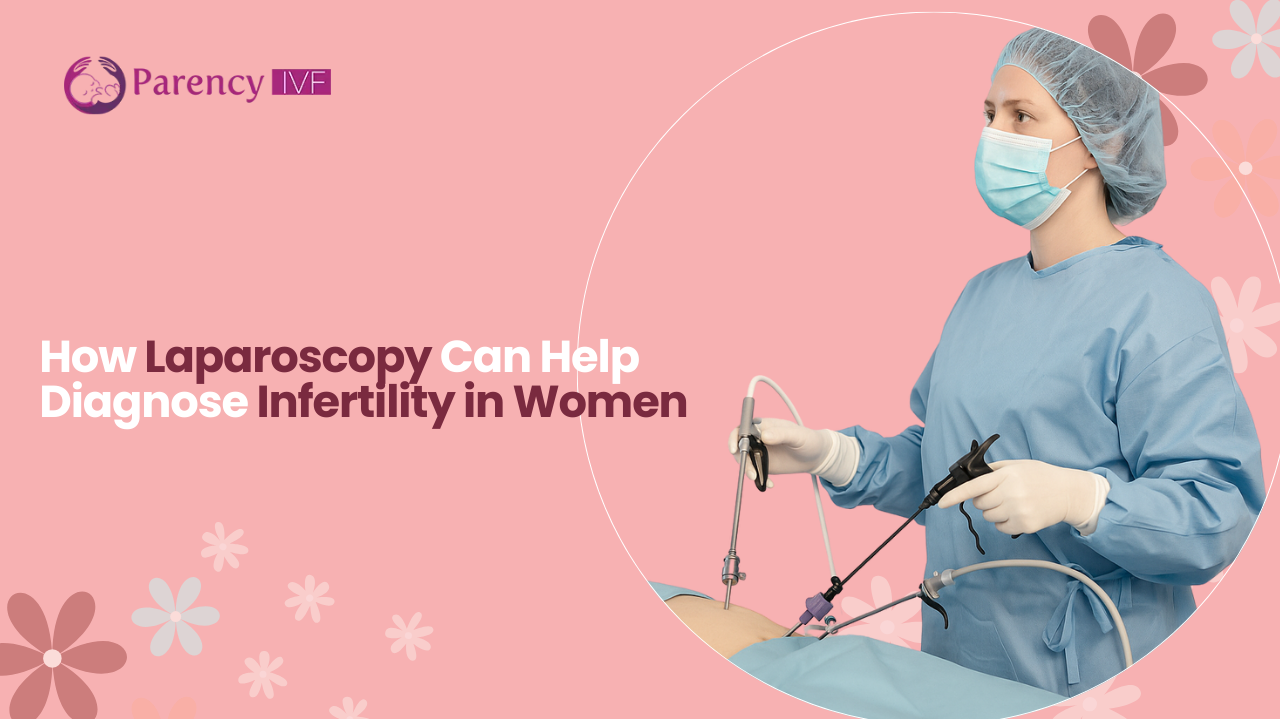



Infertility can be a complex challenge, and for many couples, finding the root cause is often difficult. Laparoscopy has emerged as a key diagnostic tool that can help uncover underlying fertility issues, offering a clearer picture of a woman’s reproductive health. In this blog, we’ll explore how laparoscopy for infertility works, why it’s used, and how it can impact fertility treatment success, such as IVF. We’ll also address the laparoscopic surgery cost for infertility and its benefits in diagnosing conditions that might otherwise go unnoticed.
Laparoscopy is a minimally invasive surgical procedure used to examine a woman’s reproductive organs. During the procedure, a small camera (laparoscope) is inserted through a tiny incision in the abdomen. This camera allows the doctor to view the uterus, ovaries, fallopian tubes, and surrounding organs. Often performed under general anaesthesia, laparoscopy offers the advantage of quicker recovery and less scarring compared to traditional open surgery. It’s a crucial tool for identifying conditions that can affect fertility, especially those that can’t be detected through non-invasive methods like ultrasound or HSG.
Laparoscopy is highly effective in identifying hidden causes of infertility that might be missed by other diagnostic tests. It is particularly useful for detecting conditions like endometriosis, pelvic adhesions, fibroids, and blocked fallopian tubes. Conditions like pelvic adhesions, which can form after infections or surgeries, may cause infertility by blocking or damaging the fallopian tubes. Laparoscopy provides visual confirmation of these issues, allowing doctors to make more accurate diagnoses and begin the appropriate treatment. Unlike ultrasound or HSG, which rely on external imaging, laparoscopy provides direct visualisation, making it a more reliable diagnostic tool.
Laparoscopy is generally recommended for women with unexplained infertility, especially after initial tests such as ultrasound, HSG, or IUI fail to provide clear answers. It is also indicated for women who have symptoms of endometriosis or pelvic infections, or have a history of abnormal imaging reports or previous surgeries that could have affected fertility. This procedure is often the next step when non-invasive tests have not yielded sufficient results. It can also be performed prior to IVF treatment to ensure there are no underlying conditions that could hinder conception.
Studies have shown that laparoscopy for infertility can improve the chances of pregnancy, particularly when it is used to treat conditions such as endometriosis, adhesions, or fallopian tube blockages. For example, laparoscopy for fallopian tube blockage often increases the chances of natural conception following treatment. Many women experience improved fertility post-laparoscopy, especially when adhesions or cysts are removed or endometriosis is treated. Laparoscopy for infertility success rates vary depending on the underlying condition, but treating these conditions during the procedure can significantly improve the chances of conceiving naturally or via IVF.
The cost of laparoscopic surgery for infertility in India typically ranges between ₹30,000 and ₹70,000. However, the laparoscopic surgery cost for infertility can vary depending on factors such as the clinic type, location, and the complexity of the procedure. For example, private fertility centres or IVF clinics in Bangalore may charge higher fees compared to public hospitals, but the expertise and services offered at specialised centres can be worth the extra cost.
Several factors influence the cost of laparoscopy for infertility:
Despite the costs associated with laparoscopic surgery for infertility, it can be a valuable investment in your fertility journey. Laparoscopy often helps avoid unnecessary treatments like multiple IVF cycles by diagnosing and treating underlying conditions. For instance, a patient diagnosed with endometriosis after laparoscopy and treated during the same procedure may conceive naturally. This can save both time and money in the long run. Minimally invasive fertility procedures like laparoscopy lay the foundation for personalised fertility treatment plans, leading to higher chances of success.
Laparoscopy is a highly effective tool for diagnosing infertility, offering direct visualisation of the reproductive organs to detect conditions that may not be apparent through other tests. Its minimally invasive nature allows for a quicker recovery time, making it an ideal choice for women facing infertility. Understanding its benefits and limitations can help tailor your fertility treatment and increase your chances of conception.
Want to know the laparoscopy cost for your specific case? Contact Parency IVF Hospital to speak with our experienced fertility specialists. We offer comprehensive consultations to assess your unique situation and provide personalised recommendations. Let us help you take the next step towards understanding your fertility and developing a tailored treatment plan to increase your chances of conception.